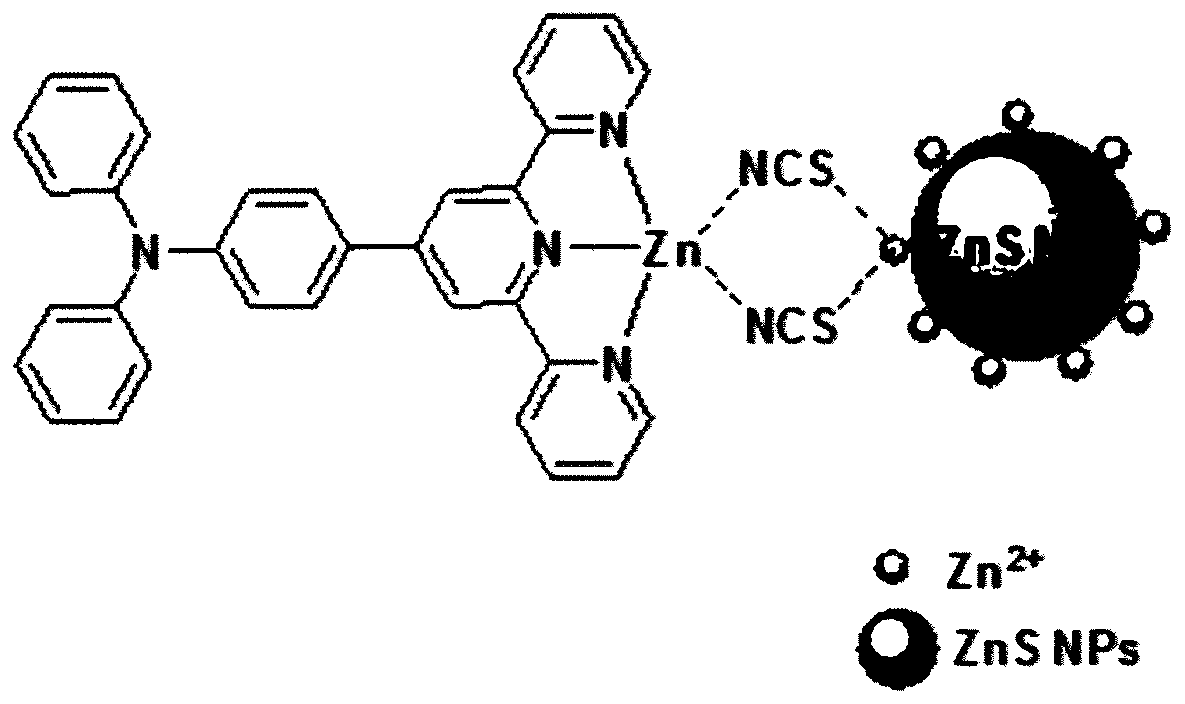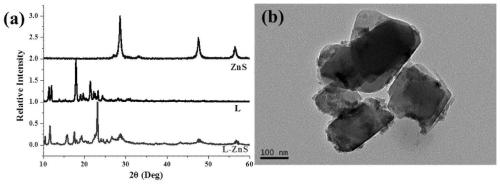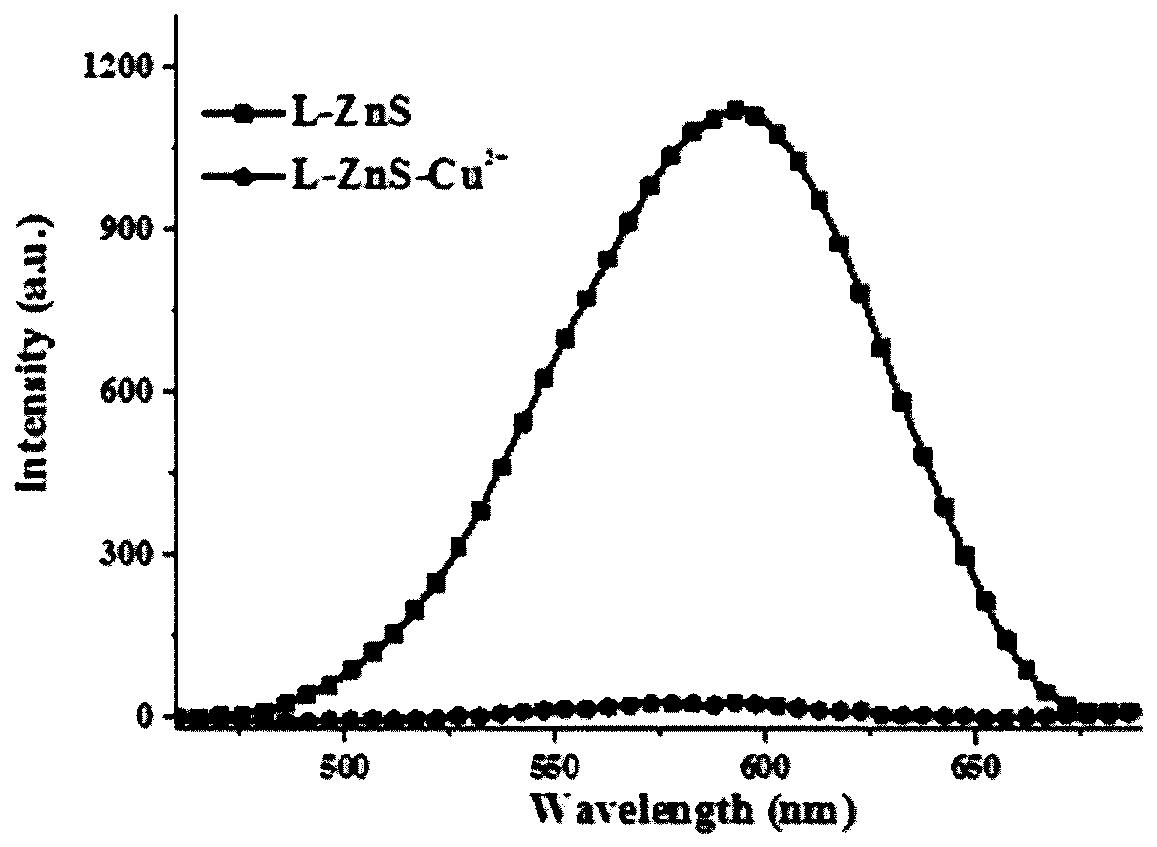An organic-inorganic nanocomposite two-photon fluorescent material and its preparation method and application
A two-photon fluorescence and inorganic nanotechnology, applied in the field of composite two-photon fluorescent materials, to achieve good rigid plane, low cytotoxicity, and good stability
- Summary
- Abstract
- Description
- Claims
- Application Information
AI Technical Summary
Problems solved by technology
Method used
Image
Examples
Embodiment Construction
[0048] 1. Preparation of L-ZnS nanocomposites
[0049] Weigh 0.1810g of Zn(SCN) 2 Dissolve in 20mL ethanol, stir at room temperature until a transparent solution is formed, dissolve 0.0476g of Ligand L in dichloromethane and add dropwise to the above transparent solution, stir at room temperature for 30min, the solution gradually changes from yellow transparent solution to Yellow turbid solution becomes red turbid solution again, then adds the ethanol solution that is dissolved with 0.0675g thioacetamide (TAA) in reaction solution, reflux reaction 12h, reaction solution becomes orange-red turbid solution by red turbid solution gradually, Cool, centrifuge, wash with ethanol and water three times, and dry overnight to obtain L-ZnS nanocomposites.
[0050] 2. Recognition of copper ions by the target product L-ZnS
[0051] Selective behavior is one of the most important characteristics of fluorescent probes. Such as Figure 4 , 5 As shown, the fluorescence intensity is strong...
PUM
 Login to View More
Login to View More Abstract
Description
Claims
Application Information
 Login to View More
Login to View More - R&D
- Intellectual Property
- Life Sciences
- Materials
- Tech Scout
- Unparalleled Data Quality
- Higher Quality Content
- 60% Fewer Hallucinations
Browse by: Latest US Patents, China's latest patents, Technical Efficacy Thesaurus, Application Domain, Technology Topic, Popular Technical Reports.
© 2025 PatSnap. All rights reserved.Legal|Privacy policy|Modern Slavery Act Transparency Statement|Sitemap|About US| Contact US: help@patsnap.com



